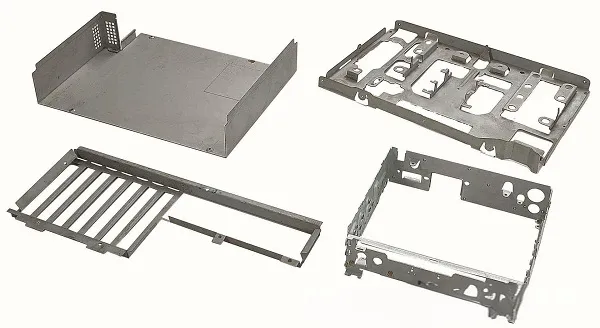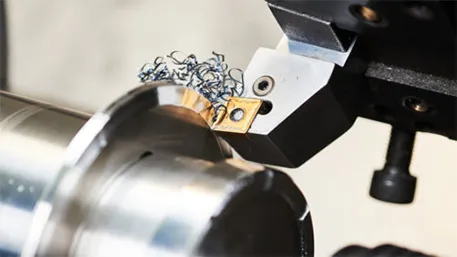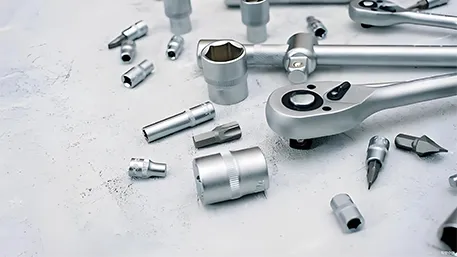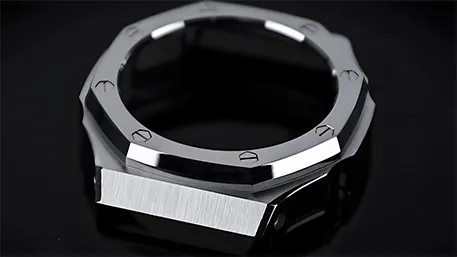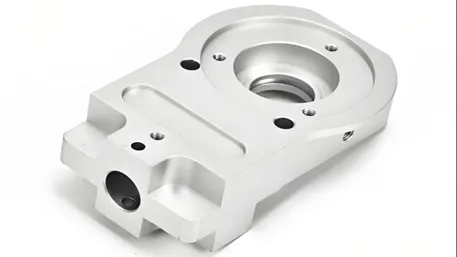In the development process of modern manufacturing, CNC machining (Computer Numerical Control Machining) is like a crucial force. With its high precision, high efficiency, and powerful programmable features, it has become the core technology in all aspects from prototype production to mass production. This article will deeply explore the principle, process, advantages, and wide application scenarios of this technology, referring to GOLDCATTLE CNC machining service.
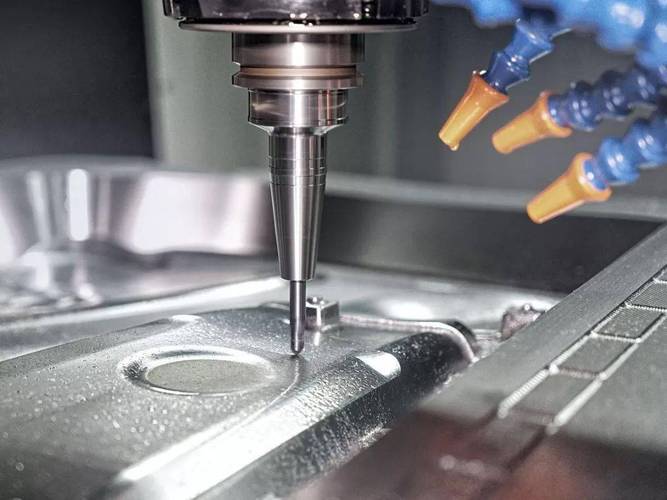
I. Basic Principles and Operation Processes of CNC Machining
CNC is the abbreviation of “Computer Numerical Control”. This technology precisely controls the movement trajectory and processing parameters of machine tools through pre – written computer programs. Its specific working process mainly includes the following key stages:
CAD Model Design: First, engineers use professional CAD software (such as SolidWorks, AutoCAD, etc.) to construct a 3D model of the part. This model is the basis for subsequent processing and contains all the geometric features and dimensional information of the part.
Program Conversion: Then, the CAD model needs to be converted into G – code or M – code that the machine tool can recognize. These codes are like the “instruction set” of the machine tool, telling the machine tool how to operate in each step.
Machine Tool and Tool Preparation: According to the processing requirements of the part, select the appropriate CNC machine tool (such as milling machine, lathe, laser cutting machine, etc.), and install the corresponding tools and fixtures to ensure that the machine tool is in good working condition.
Processing Execution: After starting the machine tool, the tool will perform precise cutting, drilling, milling, and other operations on the workpiece according to the instructions of the program, and finally process the raw material into a part that meets the design requirements.
II. Main Processing Technologies: Milling and Turning
CNC machining mainly includes two core technologies, namely milling and turning, which have their own characteristics in processing principles and application scenarios.
CNC Milling: This process removes materials from the workpiece fixed on the workbench through a multi – edged rotating tool. The common 3 – axis milling can achieve linear movement in the X, Y, and Z directions and is one of the most widely used processing methods at present. While 4 – axis and 5 – axis milling have stronger processing capabilities. They can achieve the rotation of the tool or the workpiece and can process more complex curved surface structures, playing an important role in the production of high – precision parts, such as impellers in the aerospace field and artificial joints in the medical field.
CNC Turning: This process is mainly used to process rotational parts. The principle is to make the workpiece rotate at a high speed, and then remove the excess material through the linear movement of a single – edged tool to obtain the required cylindrical surface, conical surface, etc. CNC lathes usually have two coordinate axes, X and Z, and are suitable for processing shaft – type and disc – type parts. Typical processed products include automotive drive shafts and mechanical bearing sleeves.
III. Significant Advantages and Existing Limitations
CNC machining has many significant advantages, making it occupy an important position in the manufacturing industry, but it also has certain limitations.
Advantages:
High Efficiency and Repeatability: This technology can quickly remove a large amount of material. The part processing can be completed in as fast as 1 day, and through program control, it can ensure a high degree of consistency of parts, which is very suitable for mass production with high – precision requirements.
High – Precision Assurance: The processing tolerance range can be controlled between ±0.005 inches and ±0.01 inches (the specific value depends on the customer’s specifications), which can meet the extremely high – precision requirements of industries such as aerospace and medical equipment.
Diversity of Materials and Surface Treatments: It can process more than 50 kinds of materials, covering metals and plastic materials such as aluminum alloys (such as 6061, 7075, etc.), stainless steels (304, 316L, etc.), ABS, nylon, and polycarbonate. In addition, it also provides a rich variety of surface treatment options, such as anodizing, electroplating, sandblasting, laser engraving, etc., which can meet different appearance and performance requirements.
Cost – effectiveness: For parts with relatively simple structures, its tooling and preparation costs are low, and it has obvious cost advantages in small – batch production.
Limitations:
Structural Limitations: For parts with complex interlocking or hollow – out structures, CNC machining is difficult to achieve, and other processes such as 3D printing may need to be combined at this time.
Lack of Scale Effect: Compared with processes such as injection molding, as the production quantity increases, the unit cost and delivery time of CNC machining decrease less, and it is not very suitable for ultra – large – scale production scenarios.
IV. Material Selection and Processing Capabilities
Metal Materials: Aluminum alloy is widely used in the manufacturing of automotive parts and electronic product housings due to its light weight, high strength, and corrosion resistance. Stainless steel is highly favored in the medical and aerospace fields due to its excellent wear resistance and corrosion resistance. Titanium alloy has the characteristics of high strength and high temperature resistance and is an ideal material for aerospace engine parts.
Plastic Materials: ABS has good comprehensive properties and is suitable for making parts that require certain mechanical strength. Nylon has excellent wear resistance and self – lubrication and is often used in the manufacture of gears and bearings. Polyetheretherketone (PEEK) has the characteristics of high temperature resistance and chemical corrosion resistance and has important applications in the high – end industrial field.
In terms of processing size, the maximum size of parts that CNC machining can handle is 1000mm (40 inches), the minimum size is 2mm (0.08 inches), and the minimum drilling diameter can reach 0.3mm (0.01 inches), showing strong processing adaptability.
V. Wide Application Fields
CNC machining technology is widely used in many industries:
Automotive Industry: It can be used to produce precision parts such as engine parts and transmission gears, ensuring the performance and quality of automobiles.
Medical Industry: It can process medical – standard artificial joints, surgical instruments, etc., meeting the high – precision and high – reliability requirements of the medical field.
Aerospace Industry: It is used to manufacture key components such as aircraft structural parts and engine blades, promoting the development of aerospace technology.
Consumer Electronics Industry: It plays an important role in the production of products such as smartphone housings and laptop accessories, helping new products to be launched quickly.
Robot Industry: It manufactures precise transmission parts and structural frameworks for robots, accelerating the development of the robot industry.
VI. Customer Reviews and Service Advantages
Judging from customer reviews, GOLDCATTLE CNC machining service has been widely recognized. Customers highly praise the accuracy and surface treatment effect of the processed aluminum alloy parts. For example, a customer mentioned “Precise tolerance, perfect anodizing effect”. For steel parts, customers evaluate that “The processing size is accurate, and the assembly effect is ideal”. In addition, GOLDCATTLE also provides customized material procurement and online instant quotation services. Customers can quickly obtain solutions just by uploading CAD files, which greatly improves work efficiency.
VII. Summary
As the cornerstone of modern manufacturing, CNC machining, with its high precision, high efficiency, and flexibility, continues to promote technological innovation in various industries. Whether it is complex aerospace components or consumer electronics products used in daily life, CNC machining plays a crucial role. With the continuous development of technologies such as 5 – axis machining and compound machining, CNC machining will play an even more important role in the future intelligent manufacturing field, bringing more possibilities for the development of the manufacturing industry.

